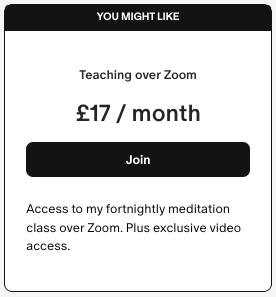The Satipatthana Sutta
Below is an excerpt from my forthcoming book… © Mahabodhi Burton 19 minute read This excerpt is from the chapter ‘The Undiscovered Foundations’ and it explores the basic structure of the Satipatthana Sutta, the Buddha’s central teaching on mindfulness. The path of mindfulness Mindfulness has been touted as a great solution to the problems of modern life, and many Westerners today will have been introduced to the concept. While respectfully touching upon its origin in Buddhism, advocates of mindfulness move quickly to emphasize its non-religious nature, citing its universal applicability in current times. Chewing a raisin with awareness or looking at a flower mindfully; these are examples of sensory experiences which can be practised and appreciated by anyone, regardless of their belief system. Such sensory experiences provide us with a cue to slow down and notice our life, and to not let it pass by in ‘busyness.’ In our fast-paced world, time itself has become the shrine at which we, as mindfulness practitioners, might worship in three-minute bursts as we take breathing spaces from the sphere of digital information that dominates many of our lives: never-ending emails, burgeoning apps, smart phones constantly interrupting us with social media notifications and alarm reminders, all catching us in an endless stream of information. Mindfulness practices help us to manage our reactions and agitations, supporting us in releasing tension. So, we build mindfulness into our day; we might share our meditation sessions with friends and strangers on meditation apps, we’ll chew our food more slowly, and we’ll build a structure of awareness into our day. We fit mindfulness into our lives, experiencing its benefits. This is good, it works, it’s definitely worth doing, and it’s certainly better than not doing it, but mindfulness has so much more potential and scope. For some, mindfulness is deeply embedded in every single aspect of the living of life. The most advanced Buddhists practice, or strive to practice, the ‘full-works’ of mindfulness, encompassing connectedness with others, ethics and actions, the imagination and insight, the whole of life, the whole shebang, all of it. Whilst modern mindfulness emphasizes the development of awareness in the present moment, its actual origin in Buddhism was exclusively concerned with whatever is life-affirming or life-denying, in Buddhist terms ‘skilful’ or ‘unskilful’, ethical, not ethical. In the early days of Buddhism mindfulness was encountered by the Greeks who settled the Indian subcontinent in the wake of Alexander’s conquest. The Greek king, King Menander, sought to understand this intriguing religion. Upon enquiring about the mark of mindfulness, he was told that mindfulness is to be aware of that which is ‘light’ and that which is ‘dark’ and to stay with the...
Super Relaxation Week
Three principles behind relaxation Following on from the YouTube sessions on stimulation which I taught six months into the pandemic and which featured the ideas of Wim Hof, I taught three sessions on relaxation. I called these ‘Super Relaxation Week.’ The sessions are available below: Day 1 This session contains a led semi-supine relaxation from the Alexander Technique. Day 2 In this session Nishpara, a yoga and meditation teacher who has worked with me at the Manchester Buddhist Centre, leads a very detailed body relaxation and breath meditation. Day 3 In this session I review three principles behind relaxation and introduce the Super Relaxation Week worksheet. Download it...








 Users Today : 8
Users Today : 8 Users Yesterday : 13
Users Yesterday : 13 This Month : 985
This Month : 985 Total Users : 16142
Total Users : 16142
